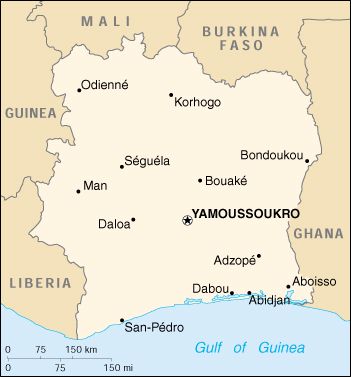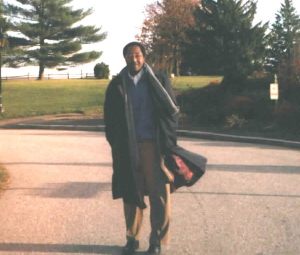
Cote
d'Ivoire
(Ivory Coast)

Herve' Yangni-Agnante MD,
CT Surgeon, Abidjan
| Location: | Western Africa, bordering
the North Atlantic Ocean, between Ghana and Liberia 8 00 N, 5 00 W |
| Population: | 16,393,221 |
| Area: | total: 322,460 sq
km land: 318,000 sq km water: 4,460 sq km slightly larger than New Mexico |
| Climate: | tropical along coast, semiarid in far north; three seasons - warm and dry (November to March), hot and dry (March to May), hot and wet (June to October) |
| Terrain: | mostly flat to undulating plains; mountains in northwest |
| Elevation: | lowest point: Gulf
of Guinea 0 m highest point: Mont Nimba 1,752 m |